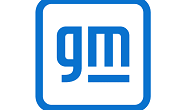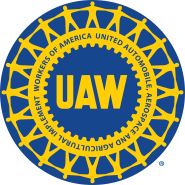
GM Reaches Tentative Deal with UAW, Bloomberg Says
General Motors has reached a tentative labor agreement with the United Auto Workers (UAW) union, according to an article in Bloomberg.

General Motors has reached a tentative labor agreement with the United Auto Workers (UAW) union, according to an article in Bloomberg.

The United Auto Workers (UAW) union on Saturday evening expanded its strike again General Motors.
Stellantis and the United Auto Workers (UAW) union announced on Saturday that they had reached a tentative labor agreement.
The first rule of Steel 101 is that you’re free to talk about Steel 101. We actually encourage it. Last week on Tuesday and Wednesday, SMU’s Steel 101 was held in Mt. Pleasant, S.C.

With the aluminum industry assembled in Nashville, Tenn., for the Aluminum USA 2023 conference, word was breaking of a tentative deal between the United Auto Workers (UAW) and Ford.
Ford and United Auto Workers (UAW) leaders confirmed on Wednesday evening that they had reached a tentative labor agreement. “Ford is proud to assemble the most vehicles in America and employ the most hourly autoworkers,” Ford CEO and President Jim Farley said in a statement sent to SMU. “We are focused on restarting Kentucky Truck […]

The United Auto Workers (UAW) union and Ford could soon reach a tentative labor deal.

The UAW went on strike on Tuesday at General Motor’s truck and SUV plant in Arlington, Texas – the automakers’ largest assembly plant in the US.

The United Auto Workers (UAW) union expanded its strike on Monday morning, hitting Stellantis’ largest plant.

United Auto Workers (UAW) president Shawn Fain indicated on Friday that a deal between the UAW and the “Big Three” automakers could be in sight.

United Auto Workers (UAW) members ratified a labor deal at ZF Chassis Systems in Tuscaloosa, Ala., on Thursday, ending a nearly month-long strike.

Canada’s Unifor, which represents union-represented auto workers there, has opened negotiations with automaker Stellantis.

Heating and cooling equipment shipments in the US ticked up in August, according to newly released data from the Air Conditioning, Heating, and Refrigeration Institute (AHRI). Shipments in August totaled 1.9 million units, compared to 1.7 million units reported in July. Shipments were up 15% month over month (MoM) but down 2% year over year […]
Unifor members in Canada have ratified a new three-year labor agreement with General Motors

The LME aluminum 3-month price was stable on the morning of Oct. 13, trading at $2,201 per tonne at that time.

The United Auto Workers (UAW) union announced a new phase in its ongoing stand-up strike against the Big Three Detroit-area automakers on Friday.

The United Auto Workers (UAW) unexpectedly expanded its strike against Ford on Wednesday evening, when 8,700 union members walked out of the automaker’s Kentucky Truck Plant.

Canada’s Unifor union reached a tentative labor agreement with General Motors on Tuesday, Oct. 10.

The United Auto Workers (UAW) said 4,000 union members at Mack Trucks have rejected a tentative labor agreement and went on strike Monday morning.

The United Auto Workers’ (UAW) strike against the Big Three Detroit-area automakers was not expanded on Friday, as “significant progress” is being made in contract negotiations.

As steel production in the US continues to get cleaner, aluminum end users are calling on the government to invest in American-made, clean aluminum

The Big Three automakers reported their third-quarter sales this week, with two of the three showing strong year-over-year gains.

General Motors made its sixth contract offer to the United Auto Workers (UAW) as the union continues its strike against all three Detroit-area automakers.

Ford Motor Co. presented its seventh offer to the United Auto Workers (UAW) on Tuesday amid the union’s ongoing strike.

Ford Motor Co. announced layoffs in Ohio and Illinois on Monday, citing the ongoing United Auto Workers (UAW) strike.

A UAW strike at Mack Trucks was avoided this week when a tentative labor agreement was reached.
Pessimism grew among metalformers in September’s business report from the Precision Metalforming Association.

SMU's weekly survey reflects what people in the market are talking about. Lately, a popular topic has been the United Auto Workers (UAW) strike.

The United Auto Workers (UAW) union expanded its strike on Friday, calling on an additional 7,000 workers at Ford and General Motors plants to strike as of 12 p.m. ET.

Ford of Canada union workers represented by Unifor ratified a new, three-year labor agreement on Sunday.